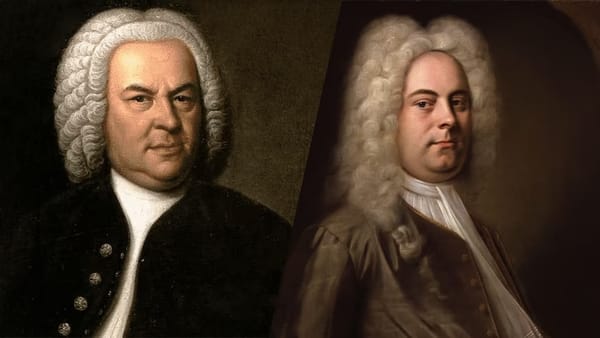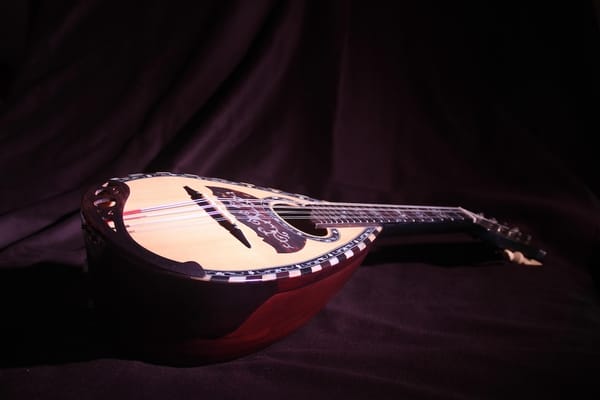Why is the Oboe Used to Tune an Orchestra?
The oboe’s distinct tone, rich in overtones and piercing clarity, makes it the ideal instrument for tuning orchestras. Its A serves as both a practical pitch anchor and a symbolic call to musical unity.

The oboe, a slender woodwind instrument with a piercing, lyrical tone, holds a unique and revered place in the symphony orchestra. Before the start of a concert, you might notice the oboist standing and playing a single note—usually an A (440 Hz)—as the rest of the orchestra adjusts their instruments to match its pitch. This ritual, repeated in concert halls worldwide, has become a tradition that few question. But why the oboe? What makes it the undisputed tuning leader of the orchestra?
In this article, we will explore the historical, acoustic, and practical reasons behind the oboe's role in orchestral tuning, and why it remains central to this process even in the modern era.
The History of Orchestral Tuning
The practice of orchestral tuning dates back centuries to when orchestras were smaller, and instruments were not standardized. Ensuring that musicians played in harmony required a central reference pitch. This reference note needed to be both consistent and audible across the ensemble.
Initially, keyboards like the harpsichord or organ were often used for tuning, as they provided a stable pitch. However, as orchestras grew larger and more diverse in their instrumentation, relying on keyboards became impractical. The oboe, already a prominent instrument in baroque ensembles, naturally took over the role due to its clear and penetrating sound.
The Science of the Oboe’s Sound
At the heart of the oboe's suitability for tuning is its unique sound, which is both rich and unmistakably distinct. The oboe produces its tone using a double reed—a pair of cane reeds bound together and vibrated by the player’s breath. The result is a sound that is:
- Stable in Pitch: The oboe's double reed and cylindrical bore design make it less susceptible to pitch fluctuations caused by temperature or humidity changes compared to other instruments. This stability is critical when setting the standard pitch for an entire orchestra.
- Easily Heard: The oboe's timbre, often described as "bright" or "penetrating," cuts through the textures of other instruments. Even in a large orchestra, the oboe's A is easy to distinguish, making it an ideal reference point.
- Rich in Overtones: The oboe produces a spectrum of overtones that contribute to its distinctive tone. These overtones make the oboe's pitch easier to match across a range of instruments.
Practicality in the Orchestra
1. Consistency Across Sections
The oboe’s A serves as a universal anchor for all sections of the orchestra. String instruments, brass, woodwinds, and percussion can all tune to the oboe's pitch. While other instruments might offer their own A, the oboe’s ability to maintain a steady and uniform pitch makes it a reliable choice.
2. Compact and Portable
Unlike keyboards, which are cumbersome and not always present in every orchestral performance, the oboe is always part of the ensemble. This availability ensures that tuning can occur no matter the venue or repertoire.
A Ritual Rooted in Tradition
Beyond its practicality, the use of the oboe to tune the orchestra has become a deeply ingrained tradition. The sight of the oboist standing and playing the tuning note signals to musicians and the audience alike that the performance is about to begin.
This ritual adds a ceremonial aspect to concerts, offering a moment of collective preparation and focus. The shared act of tuning symbolizes unity and harmony, setting the stage for the musical journey to come.
Challenges to the Oboe’s Role
While the oboe remains the tuning standard in most orchestras, some musicians have questioned whether it should retain this role. Critics point out that:
- The Piano is Often More Stable: In concertos or performances involving a piano, some argue that the piano should provide the tuning note because its pitch is fixed and unaffected by atmospheric changes.
- Electronic Tuners: Modern technology has made highly accurate electronic tuners widely available. Some suggest that these devices could replace the oboe for greater precision.
However, both alternatives lack the warmth and human connection of the oboe. The oboist's live tuning note embodies the organic, collaborative nature of orchestral music, something a machine cannot replicate.
Famous Oboists and Their Contributions
The oboe’s central role in orchestras has also elevated the instrument’s profile and its players. Renowned oboists like Heinz Holliger and Marcel Tabuteau have championed the oboe's expressive capabilities, demonstrating its versatility beyond its tuning duties.
Tabuteau, in particular, is celebrated for developing a systematic approach to oboe playing that influenced generations of musicians. His emphasis on precision and tonal clarity underscored the instrument's importance not just in tuning, but as a vital voice within the orchestra.
The Symbolism of Tuning
The act of tuning is more than a technical necessity; it is a symbolic gesture of harmony and collaboration. It reminds musicians of their shared purpose: to create music as one cohesive ensemble. The oboe, with its ancient origins and clear voice, serves as a fitting leader in this process.
In a way, the oboe represents the orchestra's heart—steady, clear, and unifying. When the oboe sounds its A, it calls the orchestra to attention, aligning individual players into a collective whole. This moment of unity reflects the deeper purpose of orchestral music: to transcend individual effort and create something greater together.
The Future of Orchestral Tuning
As orchestras continue to evolve, the role of the oboe in tuning is likely to remain. While technological advancements and alternative instruments may offer theoretical improvements, the oboe’s combination of tradition, practicality, and acoustic properties makes it irreplaceable.
Moreover, the human element of orchestral tuning—the act of one musician providing a pitch for others to follow—resonates deeply in an age of digital precision. The oboe’s A reminds us that music is a profoundly human endeavor, rooted in tradition and sustained through collaboration.
Conclusion
The oboe’s role in tuning the orchestra is a blend of history, acoustics, and tradition. Its bright, penetrating tone ensures that it can be heard clearly by all players, while its historical association with orchestral music solidifies its place as the ensemble’s pitch standard. More than just a practical tool, the oboe’s A serves as a powerful symbol of unity and collaboration in music.





